
Evil is the inseparable element of human existence. For some reason, it fascinates and attracts, especially when it can be discovered without taking an active part in it.
Audiences have also been fascinated by the portrayal of evil and violence in movies since the very dawn of cinema. In the early era of film, the morbid curiosity of moviegoers was fulfilled by so-called “execution films” (e.g. “Execution of Czolgosz with Panorama of Auburn Prison” in 1901 by Edwin Porter), based on staged, fake executions of ominous criminals. These movies provided a cathartic feeling of relief that the evil has been punished, and fulfilled the emptiness because of the lack of real public executions.
When the ideologically puritanical Hay’s Code was no longer in force in Hollywood, movie directors could finally show evil in its purest form – unrestrained by anything and not always punished. Sometimes they even create a protagonist out of the murderer – a specific anti-hero, who aside from disgust can also raise compassion or sympathy.
Movies from this list are focused, either philosophically or strictly visually, on the subject of evil that one man inflicts on another. Here are the 10 movies about the extreme human evil.
1. A Clockwork Orange
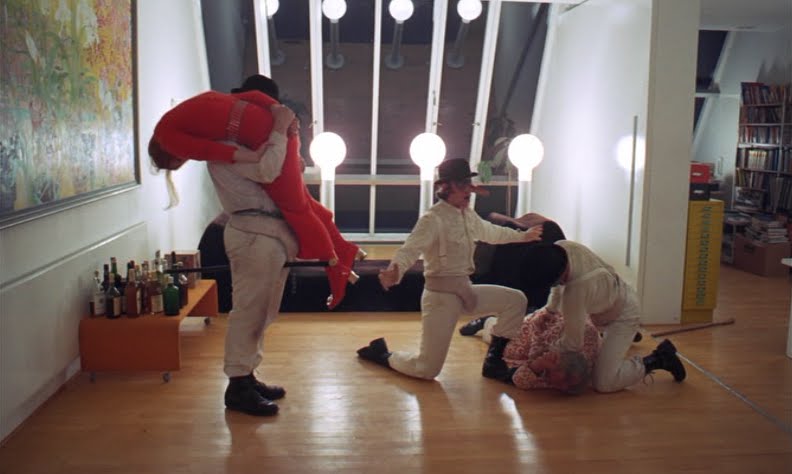
It seemed impossible that Stanley Kubrick could ever top his indisputable masterpiece of science fiction “2001: A Space Odyssey” (1968). But what would be the highest peak of the career for many directors, for Kubrick was just the middle of the road. His next movie, “A Clockwork Orange,” an adaptation of Anthony Burgess’ novel, was further proof of the perfectionist genius of this American director.
The movie’s anti-hero is Alex DeLarge (Malcolm McDowell), the eloquent and charismatic leader of an youth gang in dystopian near-future London. His typical night consists of drinking milk laced with drugs and spreading bloody chaos and evil (“ultra violence”) with his companions through the city streets.
The only thing Alex worships even more than raping and beating people is the glorious music of Ludwig van Beethoven. His way of life changes drastically when he’s caught by the police as a result of his gang’s betrayal in the time of robbery.
During his prison time, Alex volunteers for revolutionary rehabilitation therapy, which will reprogram him into a law-abiding citizen by making him react to acts of violence with physical repulsion. Therapy is held at the expense of not only his love for Beethoven’s music, but also the one aspect that makes the human a human – a free will.
“A Clockwork Orange” is an intellectual take on subjects such as humanity, evil, street violence, and the society of the future. The movie is directed with a true passion and vision. All of the technical aspects like cinematography, set designs and costumes are the real perfection, not to mention the unforgettable synth “remixes” of classical music made by Wendy Carlos. McDowell was born to play the leading role, as he’s as sinister and suave.
The movie was (and still is) considered as controversial at the time of its release because of the graphic depiction of violence and rape. Due to the allegations that the movie had inspired youth gangs in England to commit similar crimes as Alex and his gang, Kubrick forbade “A Clockwork Orange” to be on screens in this country for as long as he lives.
2. Angst
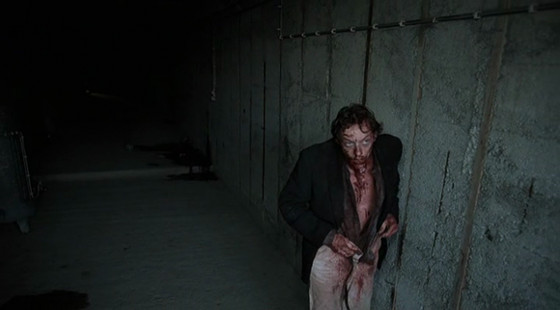
The process of rehabilitation doesn’t always work successfully for all prisoners. A good example of it is the unnamed main character (Erwin Leder) of the Austrian-made film “Angst.” The very first thing he does after leaving the prison walls is find a person to commit a perfect murder, just to satisfy his vicious urges. After a failed attempt to kill a taxi driver, he wanders to a residence located in the suburbs, planning to murder all of the occupants in the most horrible way he could imagine. However, not everything went as satisfactorily as he had planned.
“Angst” is a movie you will never forget. Director Gerald Kargl puts the audience directly in the twisted, evil mind of a serial killer and lets them see the world through his eyes. And it is not a pleasant experience. The movie is constantly narrated by a voiceover of our “protagonist,” which resembles in some way the style of existential literature classics. Endowed with characteristic physiognomy, Erwin Leder, known from “Das Boot” (1981), is perfectly cast as a murderer and is horrifyingly authentic in his role.
The running time, which is less than 90 minutes, works as an advantage, because there are no unnecessary scenes that could disturb the specific rhythm of the movie and its hypnotizing immersion. The cold-colored cinematography by Zbigniew Rybczyński (an Oscar winner for directing “Tango” and the co-writer of “Angst”) and the camera often floating slightly above the head of Leder, all combined with electronic music by Klaus Schulze of Tangerine Dream, creates the dream-like atmosphere of the movie. “Angst” is one of the favorite movies of Gaspar Noé, which visibly influenced his works.
3. Cannibal Holocaust
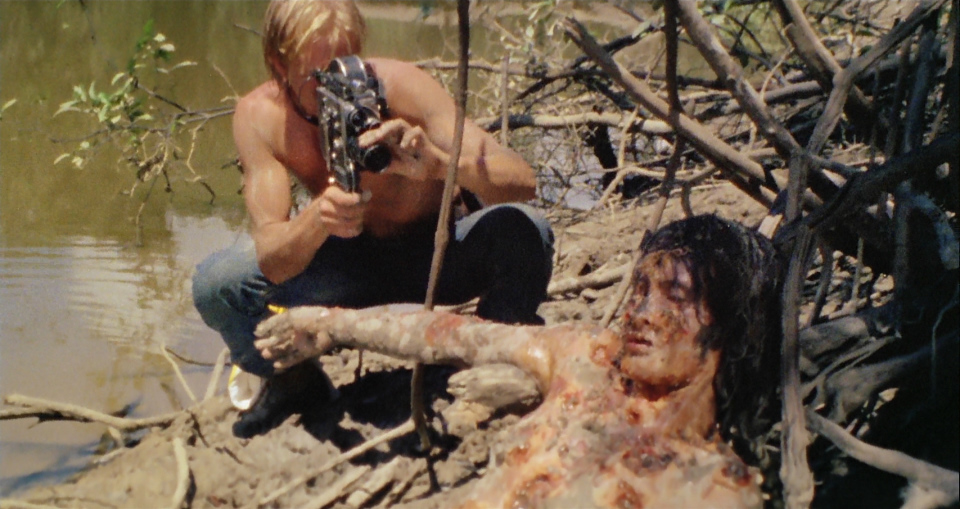
Italian cannibal cinema is an exploitation genre that was popular in late 70s/early 80s, and dealt with the subject of primitive and bloodthirsty cannibalistic tribes in South America and their violent confrontation with an ill-fated group of protagonists – representatives of the civilized world. The forefather of that movie phenomena was “Man from Deep River” (1972), which inspired such films as “Last Cannibal World” (1977), “Eaten Alive” (1980) and “Cannibal Ferox” (1981). However, the most recognizable one and the best of them all is “Cannibal Holocaust.”
It tells the story of Professor Monroe (Robert Kerman), who arrives to the Amazonian rainforest to find a group of filmmakers that went there to make a documentary about cannibal tribes and went missing in the jungle. “Cannibal Holocaust” is infamous because of live killing of animals on set, and also because of the shocking, gruesome sequences of gory violence made so authentically that the director, Ruggero Deodato, was summoned before the court to prove that the actors weren’t really killed during the movie’s production.
Unlike other cannibal exploitation flicks, “Cannibal Holocaust” has some depth and social commentary to it. During the investigation, Professor Monroe discovers that not the cannibals, but the “civilized,” educated white documentalists were truly the evil ones, because of their cruel and ruthless treatment of the Amazonian natives.
With killings and rapes, they’re disturbing the local natural harmony, all in the name of making the most realistic documentary. Their brutal death at the hands of cannibals feels like a well-deserved revenge and not just a random act of primitive violence.
What makes “Cannibal Holocaust” a unique movie experience is its innovative (at the time) usage of found footage, and the unforgettable, sometimes beautiful and sometimes terrifying soundtrack by legendary Italian composer Riz Ortolani.
4. Come and See
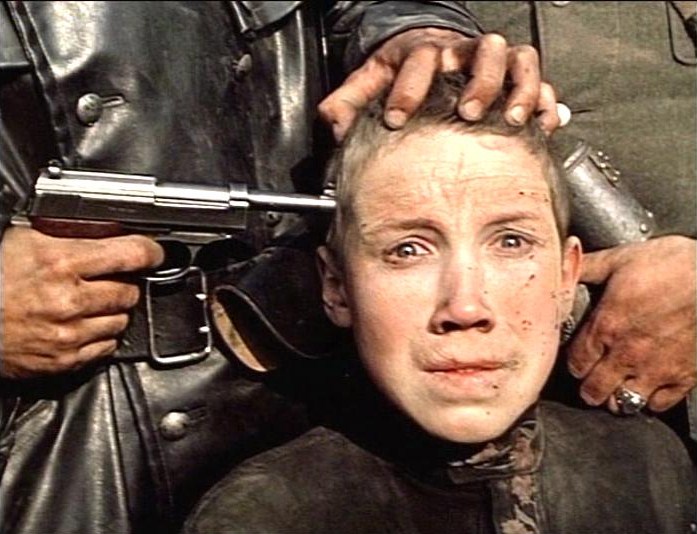
During Eastern Front Campaign in 1943, Belarusan boy Flora (Aleksei Kravchenko), against his mother’s entreating, decides to join the ranks of the Soviet Army to fight the Germans invading his motherland and to become a real man. When leaving home, he doesn’t know that this will be the beginning of a nightmarish journey through the manmade circles of hell, and soon he will realize that war is nothing more than the suffering of the body and mind.
“Come and See,” directed by Elem Klimov and co-written with Ales Adamovich (who, like Flora, was a teenage soldier) is probably the most naturalistic, soul-crashing and apocalyptic representation of war atrocities that was ever made. It has a lot more in common, in terms of atmosphere and imagery, with the horror genre than with a typical war movie.
A shocking sequence of Nazi soldiers burning the villagers alive in stables will make the skin crawl because of its terror on screen and the feeling of helplessness. It’s hard to imagine that this was an everyday reality for people living in Soviet Union at the time of World War II.
Kravchenko is terrific in the lead role of Flora. His heartbreaking transformation from a naïve and optimistic young boy into a shell of a man is truly believable. Ben Wheatley, the director of “Kills List” (2011), once said about this movie: “It’s interesting when you talk to people and you say, ‘Have you seen Come and See?’ and they get a look in their eyes where you can tell if they’ve seen it or not — they kind of look a bit sad and beat.” It’s impossible not to agree with him – what is more impossible is being prepared to watch this movie.
5. Das Experiment
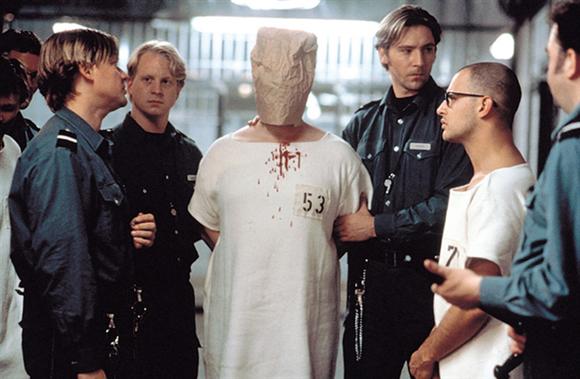
“Das Experiment” is based on a book, “Black Box” by Mario Giordano, heavily inspired by the infamous Stanford Prison Experiment. It tells the story of a taxi driver, Tarek Fahd (Moritz Bleibtreu), who participates for money in a psychological experiment with other volunteers. They’re shut in a simulated prison where one group is assigned to act as the guards, while the second as unnamed, recognized only by numbers and deprived of civil rights as prisoners.
When the experiment starts, tension occurs between the prisoners and guard and soon the simulation becomes a grim spectacle of all the worst in human nature. Because of the overwhelming feeling of authority and isolation from the world, guards become progressively more violent and sadistic toward the prisoners, losing all of their moral restraint in the process.
As the group psychosis takes the full control over their doings, they kill one of the prisoners and kidnap the team of supervisory scientists, taking by that power over everyone’s life and death in the whole facility.
“Das Experiment” is frightening and fatalistic, but also one of the most authentic movies about evil sleeping in human’s subconsciousness and waiting patiently for a specific moment to bob up. The movie is masterfully crafted, both in terms of filmmaking technique and how it powerfully affects the audience’s mind.
It’s the film debut of German director Oliver Hirschbiegel, who later directed another famous movie concerning evil, “Der Untergang” (2004), about last days of Adolf Hitler. This is the type of cinema that sometimes makes a viewer scream at the screen, and is sometimes watched through one’s fingers – a truly shocking and soul-crushing movie experience.